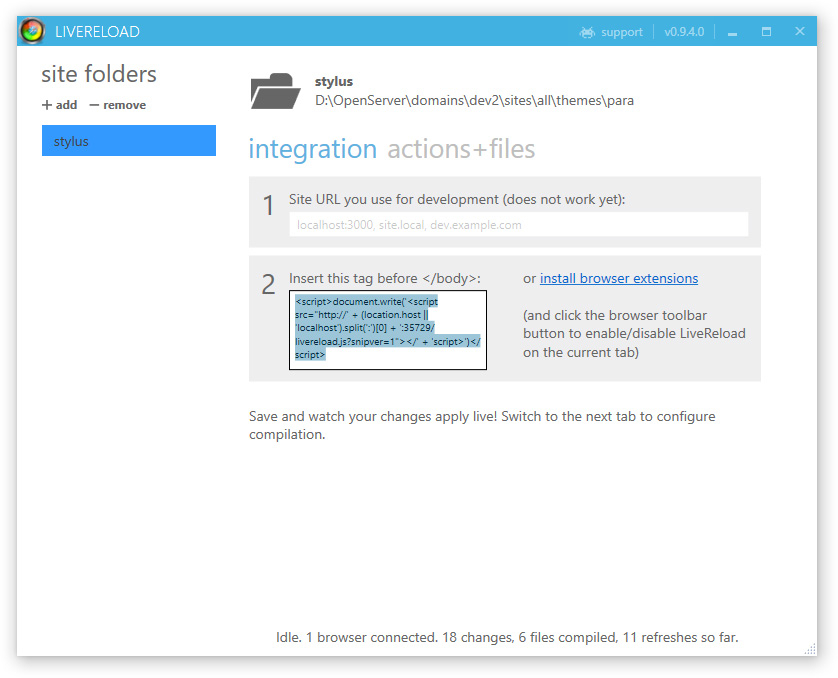
Now you need to something to start a livereload server, watch files for changes, and broadcast their availability. This matches the fact that we are only declaring this package as in devDependencies. Note that we only want to import and use the middleware when in development. use require ( 'connect-livereload' ) 35729
NODEJS LIVERELOAD INSTALL
First, install: npm install connect -livereload -save -dev It will add a little snippet of JavaScript to each of the html responses that is requested through this middleware.

Just grab one more middleware to handle the LiveReload. Express uses the Connect library for its middleware scheme. you’re doing a website on Nodejs these days, you’re probably using Express. ping browser on Express boot, once browser has reconnected and handshaken LiveReloadServer.watch(path.join(_dirname, 'public')) open livereload high port and start to watch public directory for changesĬonst liveReloadServer = livereload.createServer() Set up Express to both start livereload server watching the public directory and ping the browser duringĬonst livereload = require("livereload") Ĭonst connectLivereload = require("connect-livereload") Monkey patches every served HTML page with a snippet that connects to this high port Opens a high port and notifies the browser of changed public files You can livereload both front and backend changes to the browser with 'livereload', 'connect-livereload', and 'nodemon' packages. When running gulp in terminal, it will start watching server as well as refreshing browser on change in any files.Īlthough we specify port 3001 in express server, our app will be working on port 3002, as we write in browser-sync. Gulp.watch().on("change", browserSync.reload) ReloadDelay: 1000 //Important, otherwise syncing will not work Proxy: ' //this is the port where express server works Port: 3002, //this can be any port, it will show our app Var browserSync = require('browser-sync').create() Next thing is to run nodemon and browser sync in gulp. bin/or elsewhere), express server listens to port 3001. So, dependencies from package.json to make it work: Nodemon can see when changes occur in any types of files. Restarting server is one thing, refreshing browser is another thing. you directly edit the files that are served) then observe the source directory and you're done.
NODEJS LIVERELOAD CODE
You need to add this snippet to every HTML page that should reload: If you don't transpile/compile/preprocess your js/css/html code (i.e.

Livereload observes the dist directory which contains the compiled files (js, css, html). The default value is false, causing nothing to happen when the router is asked to navigate to the active route. There are two possible values for onSameUrlNavigation ’reload’ or false. What is the default value for onsameurlnavigation ’reload?.When Angular 2 was released this feature was not present in the router and there was no easy way to reload the active route. You could invoke reload () in your router and away you went. Setting up this type of reloading in AngularJS was straightforward. Users expect to be able to click on a page menu item and have the page re-initialise. How do I reload the active route in AngularJS?.To determine how those events are actually fired, you need to specify the runGuardsAndResolvers configuration option on your route. It is worth noting reload does not actually do the work of reloading the route, it only re-triggers events on the router that we then need to hook into.


 0 kommentar(er)
0 kommentar(er)
